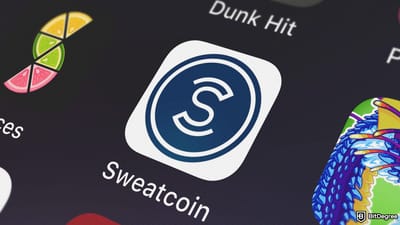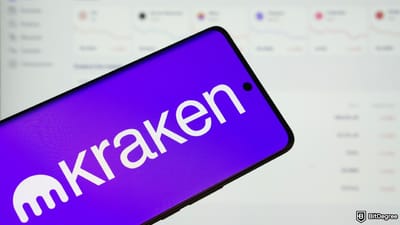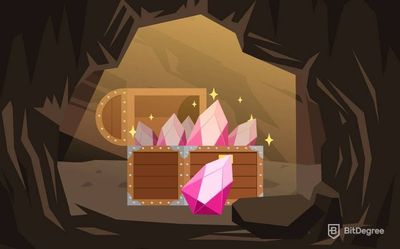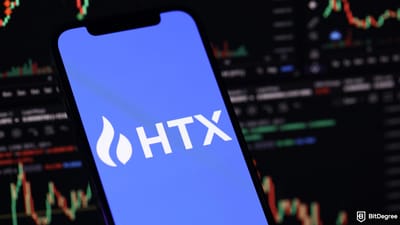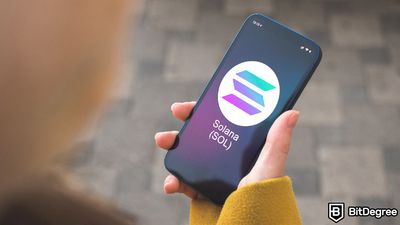Key Takeaways
- Borrow to scale position - generally up to 10x on eligible pairs - but remember interest ticks hourly, so timing and leverage discipline are key;
- Control risk with Isolated (ring-fenced collateral) or Cross (shared equity), monitor margin level (alerts 300%, liquidation at 100%), and set TP/SL or OCO before you size up;
- Getting started is simple: complete KYC, enable a margin-capable mode, move collateral to the Trading account, and use auto-borrow/auto-repay to streamline opens and closes.
Stop overpaying - start transferring money with Ogvio. Sign up, invite friends & grab Rewards now! 🎁
OKX margin trading is like adding a turbo to your usual spot trade - small input, bigger output. The exchange can amplify moves with up to 10x leverage when used carefully. In addition, margin trading on OKX also runs on a clock: interest is tallied at the start of each hour, so timing matters.
On OKX, your margin level is your health bar: at 300%, you’ll get an alert. Drop toward 100% and liquidation can begin. I’ll keep things simple, practical, and focused on control, so you can explore leverage without surprises.
In this OKX margin trading tutorial, you’ll set up your first trade step-by-step: enable margin, choose isolated or cross, pick sensible leverage, place the order, and add TP/SL or OCO protection. You’ll also see where auto-borrow lives and how to repay - ideally before the hour - to control interest.

Did you know?
Subscribe - We publish new crypto explainer videos every week!
What Is Tether? (USDT SIMPLY Explained With Animations)
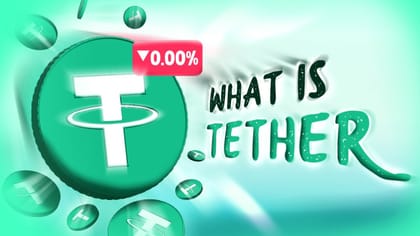

Table of Contents
- 1. How to Margin Trade on OKX
- 2. What is OKX Margin Trading
- 3. When Margin Helps (and When It Hurts)
- 4. OKX Margin Trading Fees
- 5. Isolated VS Cross
- 6. Account Modes That Affect Margin
- 6.1. Spot Mode
- 6.2. Multi-Currency Cross Margin
- 6.3. Portfolio Margin
- 7. Risk & Liquidation on OKX
- 8. Who Can Use OKX Margin
- 9. Conclusions
How to Margin Trade on OKX
Let’s begin this OKX margin trading tutorial with a step-by-step guide.
Latest Deal Active Right Now:![OKX margin trading: a red arrow pointing to the [Create account] button on OKX's sign up page. OKX margin trading: a red arrow pointing to the [Create account] button on OKX's sign up page.](https://assets.bitdegree.org/images/okx-margin-trading-step-1.jpg)
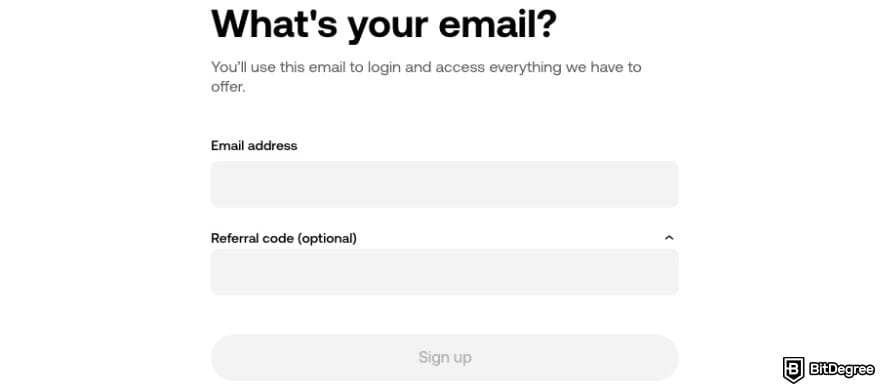
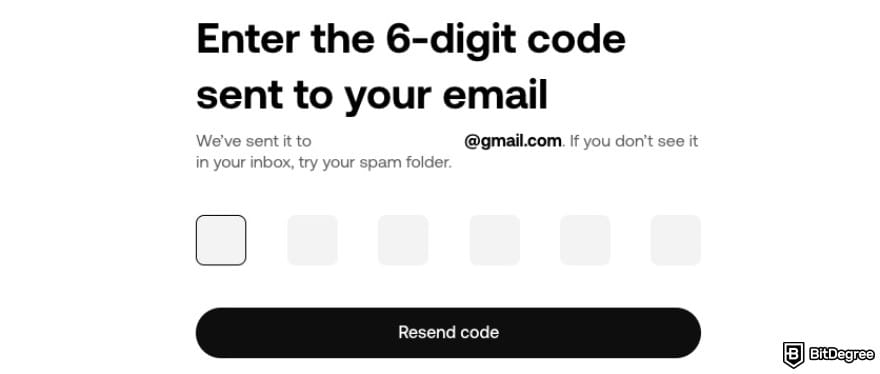
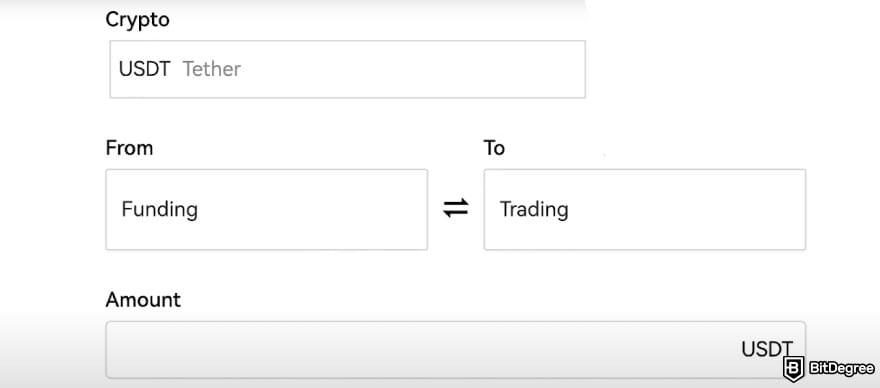
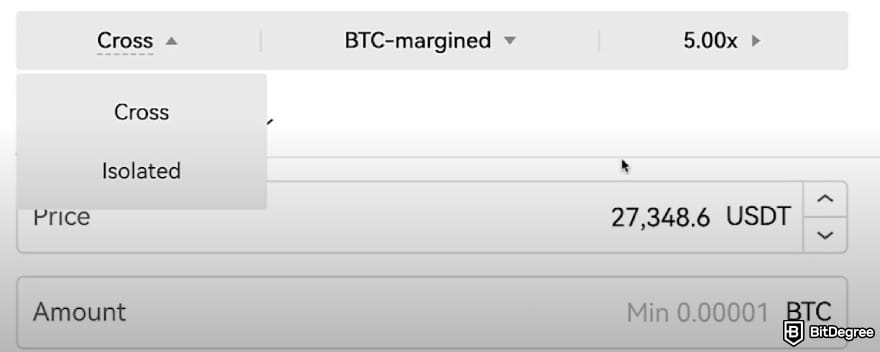
Lastly, all that’s left is to close and settle. Under Unified Account, borrowing and repayment trigger automatically when you close (if Auto-repay is enabled).
What is OKX Margin Trading
OKX margin trading features let you borrow funds against the assets in your account to place larger spot trades.[1] You can go long by borrowing the quote asset to buy more, or go short by borrowing the base asset to sell first and buy back later.
Leverage is pair-specific, with spot margin generally offering up to 10x on eligible markets. That “x” shows how many times larger your position can be relative to your own collateral.
Remember: higher leverage means higher risk of liquidation if prices move against you.
You can choose Isolated or Cross margin. The former locks risk to one position - only the collateral you assign can be lost. Cross shares margin across positions, which can help absorb swings but also spreads risk across your account.
Moreover, OKX uses a Unified Account, so margin can interact with other products. In cross modes, P&L across products can offset each other; isolated keeps each position ring-fenced.

Naturally, borrowing isn’t free. Interest accrues hourly on any liabilities, and rates vary by asset and market conditions. You can use Auto-borrow and Auto-repay to streamline opening and closing trades, or repay manually at any time.
Risk is tracked by your margin level. OKX warns you around 300%, and liquidation can trigger at a 100% margin level if you don’t top up or reduce risk. You can set alerts and use the built-in calculator to estimate liquidation prices before placing an order.
For a simpler flow, Quick Margin offers a guided experience with manual, auto-borrow, and auto-repay options, useful when you’re starting out and want fewer steps.
Overall, OKX margin trading helps you amplify a view - long or short - using borrowed funds, with clear modes, hourly interest, and risk tools. Start with modest leverage, set alerts, and know your liquidation thresholds.
When Margin Helps (and When It Hurts)
Margin amplifies your thesis, so market conditions matter. In steady trends with decent liquidity, small moves can cover costs and still leave room for profit.[2] In choppy ranges, the same leverage magnifies noise, turning tiny wiggles into stop-outs and hourly interest into drag.
Tight spreads and visible depth reduce slippage, so your effective entry is closer to your plan. Thin books widen spreads under pressure, so a “green” trade on the chart can print red after costs. Beginners should favor top pairs with consistent depth.
Volatility cuts both ways. Enough movement is needed to outrun fees and interest. Too much creates gap risk and emotional sizing. Think in volatility units: if your stop sits inside normal intraday noise, you’re guessing, not sizing. Place risk beyond routine swings so one candle doesn’t decide your day.

Furthermore, spot shorts rely on borrowing the base asset. During squeezes, borrow can tighten or disappear, and funding costs rise. If borrow is scarce or APR spikes, the edge shrinks even if your read is right. Sometimes, “no trade” preserves more capital than a forced entry.
Margin also shines when structure is clear: break-and-retest, channel edges, or clean momentum with pullbacks. It hurts in a headline-driven chop where direction flips on every wick. If the chart reads like static, reduce size or skip it - interest doesn’t care that you’re “almost right”.
That said, the longer you hold, the more the cost clock ticks. The move you need grows with every hour. Margin rewards decisiveness: define the invalidation, define the target, and accept that flat - with minimal accrued interest - is a winning outcome when conditions degrade.
OKX Margin Trading Fees
When it comes to OKX margin trading fees, there are two costs: the spot trading fee incurred when your order is filled, and the borrowing interest on any funds you borrow. There’s no extra “margin surcharge” hidden elsewhere.
Spot margin uses the same maker/taker fees as OKX spot. At the entry tier, that’s typically around 0.08% maker / 0.10% taker, with discounts for higher volume or holding OKB. Always check your live tier before you trade.
For any additional discounts, I highly recommend checking out OKX's promo codes.
In addition, OKB is the native utility token for OKX, used to pay for transaction fees, access exclusive platform benefits, receive trading fee discounts, and participate in DeFi services and token sales.
That said, which coin pays the fee? On spot, OKX deducts the fee from the asset you receive on that side of the trade. If you sell BTC for USDT, the fee comes from what you receive.
Borrowing interest is the second piece. It’s asset-specific, annualized, and accrues at the start of each hour you remain in a borrowed position. The formula OKX uses looks like this:
Interest = Liability x (Annualized rate / 365 / 24). Repay before the next hour to avoid another tick.
OKX’s interest schedule is posted per asset and can change with market conditions. Check the margin fees page for the current APRs on the coin you plan to borrow.
It’s worth noting that unpaid interest can compound in some jurisdictions’ loan terms (interest added to the liability each period). In short: let it run long enough and you’ll pay interest on interest - so plan exits and repayments.
Here’s a cheat sheet to make it easier for you:
Cost component | What it covers | Entry rate | When it's charged | How to lower it |
|---|---|---|---|---|
Spot trading fee | Maker/taker on your margin spot fill | 0.08% / 0.10% | On order fill | Increase 30-day volume; |
Borrowing interest | Cost of borrowed asset | Asset-specific APR | On the hour, every hour | Repay before the next hour; |
Fee currency | Which coin pays the fee | ✗ | At settlement | Spot fees are taken from the asset you receive on that side. |
Table: OKX margin trading fee overview
Quick example (for feel, not a quote): borrowing 1,000 USDT at 8% APR for 3 hours costs about 0.027 USDT total: 1000 x 0.08 / 365 / 24 x 3. Close before the next hour rolls to prevent the meter from running.
That said, some practical tips include:
- Turning on Auto-repay, which will pay back what you borrowed when you close.
- Place exits before the hour.
- Favor maker orders where possible to clip a lower fee.
Your exact savings depend on your tier and the asset’s APR. In addition, if you use unified/portfolio margin, interest on certain derivatives-related liabilities can have an interest-free quota. Standard spot margin borrows still accrue hourly interest beyond any quota. Therefore, make sure you know which mode you’re in before you size up.
Bottom line, plan for maker/taker + hourly interest, watch the clock, and check the margin fees page before each new borrow. That’s the whole OKX margin trading fee story - simple enough even for beginners.
Isolated VS Cross
Moving along with this OKX margin trading guide, we have the different margin styles: Isolated and Cross. Think of the former as a helmet for each trade. The latter, on the other hand, is one shared helmet for the whole team. Isolated locks risk to a single pair. Cross shares equity across positions under the same margin asset, and in advanced modes, across products.
In Isolated, you pre-allocate collateral to that pair. If the trade goes wrong, only that slice can be lost; everything else stays untouched. P&L and risk don’t spill over to other positions. Great for experiments, events, or keeping a wild idea quarantined.
In Cross, all positions under the same margin asset pull from a common balance. Gains elsewhere can cushion dips; losses can drain the same pool. It’s capital-efficient and smoother, but one bad move can threaten others if you don’t manage size and stops.

Moreover, liabilities are tracked by mode. OKX records and deducts interest hourly - right at the start of each hour - on the borrowed asset. There’s a short processing window, but the meter ticks on the hour. Interest = liability x (annualized rate / 365 / 24).
It’s suggested to choose the mode before opening the order, use the calculator to preview liquidation, set TP/SL, and consider Auto-borrow and Auto-repay to streamline entries and exits.
So, you should pick Cross when: you’re hedging a basket; you want gains on one leg to offset another; or you’re using Unified Account, where multiple assets can count as collateral. It’s efficient, but watch total account risk - not just a single chart.
Regarding Isolated, you should pick it if you’re testing a new pair; you want high leverage without risking the rest; or you’re trading a one-off event. Keep the blast radius small and know your maximum loss.
Account Modes That Affect Margin
Here’s a quick pit stop before we press the gas: OKX’s Unified Account has different “account modes”, and each one changes how your margin is counted, borrowed, and risk-checked.
Spot Mode
Spot mode lets you borrow right from the spot ticket. You can enable auto-borrow/auto-repay, allowing the system to borrow when your order fills and repay on close, or use manual borrowing. Order checks use your USD-valued equity with discounts applied to collateral.
It’s simple. Place the order, and the platform validates that you have enough adjusted equity after discounts. If not, the order simply won’t go through - so sizing and collateral choice matter here.
Multi-Currency Cross Margin
This mode pools your assets into a USD-equivalent bucket so P&L and collateral can support each other across spot, margin, futures, and options. Risk is measured on adjusted equity after discounts. If that equity covers the maintenance margin, you’re safe. If not, cross positions can be reduced or liquidated together.
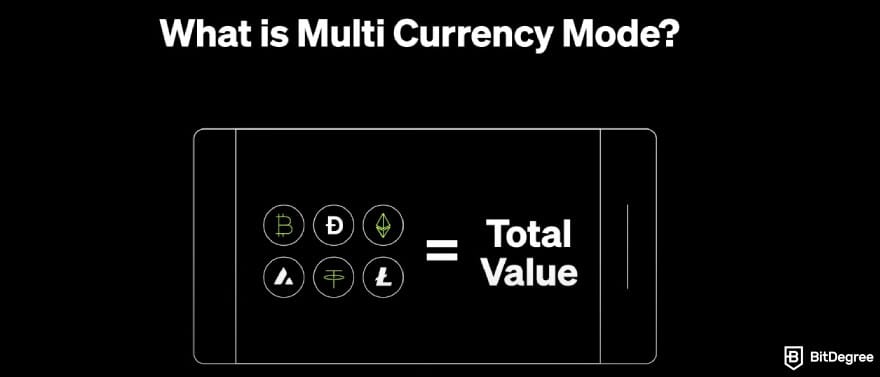
You can choose which coins count as collateral for risk sharing, and their discounted USD values feed your adjusted equity. It’s capital-efficient and works with auto-borrow. Interest on liabilities is charged at the start of each hour.

- Secure and reliable
- Accepts fiat currencies
- Lots of trading options
- Reputable exchange
- Accepts fiat currencies
- Offers various trading options

- Huge trading variety
- Regulation-compliant around the globe
- Fair trading fees
- Beginner-friendly
- A wide array of features
- Vast number of different crypto coins & tokens

- Beginner-friendly
- Secure
- Decent trading and withdrawal fees
- Crypto.com Visa Card
- Automated tools & bots
- Ecosystem synergy with CRO
Portfolio Margin
Portfolio Margin uses a risk-based model that can lower requirements by recognizing hedges across products under the same index. It’s powerful, but more complex than a regular cross-margin. Requirements and calculations are portfolio-driven rather than per-leg.
Who gets in? You must pass eligibility checks - OKX notes a minimum net equity threshold and activation steps before enabling Portfolio Margin. Use it if you manage multi-leg, hedged books and want offsets. However, I would advise sticking to simpler modes if you’re a beginner.
Risk & Liquidation on OKX
Risk on OKX is tracked by your margin level - think of it as a health bar. You’ll get an alert around 300%. If the margin level hits 100%, liquidation can start. That’s the line you’re looking to avoid.
Under the hood, the margin level = adjusted equity + (maintenance margin + liquidation fees). It’s calculated with the mark price (not the last trade). When the margin level reaches 100%, OKX cancels risk-adding orders and begins partial liquidation. It cuts size tier-by-tier to restore margin rather than nuking everything at once.
If partial cuts don’t fix it, positions can be fully closed. A liquidation clearance fee is charged and sent to the insurance fund to help absorb losses.
In Cross/Multi-currency Cross, assets are pooled into a USD bucket. Gains can cushion losses, but risk also spreads. Liquidation uses adjusted equity with discounts to collateral values. In Isolated, only that position’s collateral is at risk. It follows the same 300% alert and 100% liquidation thresholds, tracked separately from the rest of your account.

With Portfolio Margin, risk is portfolio-based. Liquidation still triggers at 100% MMR, and the engine may even open hedging futures to reduce overall risk when options liquidity is thin.
Remember interest drag: liabilities accrue interest on the hour, and OKX deducts interest first. Let it pile up, and your margin level can slide closer to liquidation. In addition, don’t forget to use OKX’s “shield”. To be more specific, set 300% alerts, pre-check your estimated liquidation price with the calculator, and keep a buffer of collateral or lower leverage.
That said, if stress hits, act fast. Add collateral, repay, reduce size, or close - ideally before the next interest tick. Small, early tweaks beat forced exits pretty much every single time.
Who Can Use OKX Margin
So, can you use OKX margin trading? If you’re 18+, completed KYC verification, and your local rules allow it, you can borrow against your assets to trade spot with leverage.
Now, location matters. OKX restricts services in several places, including the US, Canada, the UK, Hong Kong, India, Japan, and more, including sanctioned regions like Crimea, Donetsk, Luhansk, etc. Therefore, always check the live list before you plan a margin strategy.
You’ll also need to enable margin and hold eligible collateral. OKX lets you deposit digital assets or fiat to be held as margin, and spot margin pairs generally offer up to 10x leverage, depending on the pair. Borrowing and risk checks are automatically triggered once you place an order.

OKX expects basic experience and risk tolerance. By using margin, you confirm you understand the risks, your funds are legally sourced, you’re not on sanctions lists, and you’ll follow applicable laws in your region.
Newer traders can start with Quick Margin. It streamlines the flow and supports auto-borrow and auto-repay, so opening and closing a margin trade feels like a guided lane rather than a maze of settings.
Active multi-product traders can go further. Multi-currency cross-margin pools assets for efficiency, and Portfolio Margin unlocks risk-based offsets - available to qualified users with over $10,000 net equity and best for hedged books.
Conclusions
OKX margin trading lets you scale a view - long or short - by borrowing against your assets. Start small, pick Isolated for sandboxed risk or Cross for shared cushion, and choose leverage that still lets you sleep. Unified/Portfolio modes change the math; Quick Margin and Auto-borrow/Auto-repay keep the flow simple so you can focus on sizing and exits.
The price of power is twofold: maker/taker on fills and hourly interest on liabilities. Watch the clock, repay before the hour, and preview liquidation with the calculator. Treat margin level like a health bar - alerts near 300%, danger at 100%. Keep a buffer, use TP/SL or OCO, and adjust early to avoid forced cuts.
Before completing this OKX margin trading guide, I also recommend parking your private keys somewhere safe. Check out Ledger Flex or Trezor Safe 5, and trade with peace of mind that your assets are protected.
The content published on this website is not aimed to give any kind of financial, investment, trading, or any other form of advice. BitDegree.org does not endorse or suggest you to buy, sell or hold any kind of cryptocurrency. Before making financial investment decisions, do consult your financial advisor.
Scientific References
1. Black J., Hossain J., McFarland S.: 'Margin Trading and Price Dynamics on Cryptocurrency Exchanges';
2. Fang F., Ventre C., Basios M., Kanthan L., Martinez-Rego D., Wu F., Li L.: 'Cryptocurrency trading: a comprehensive survey'.


